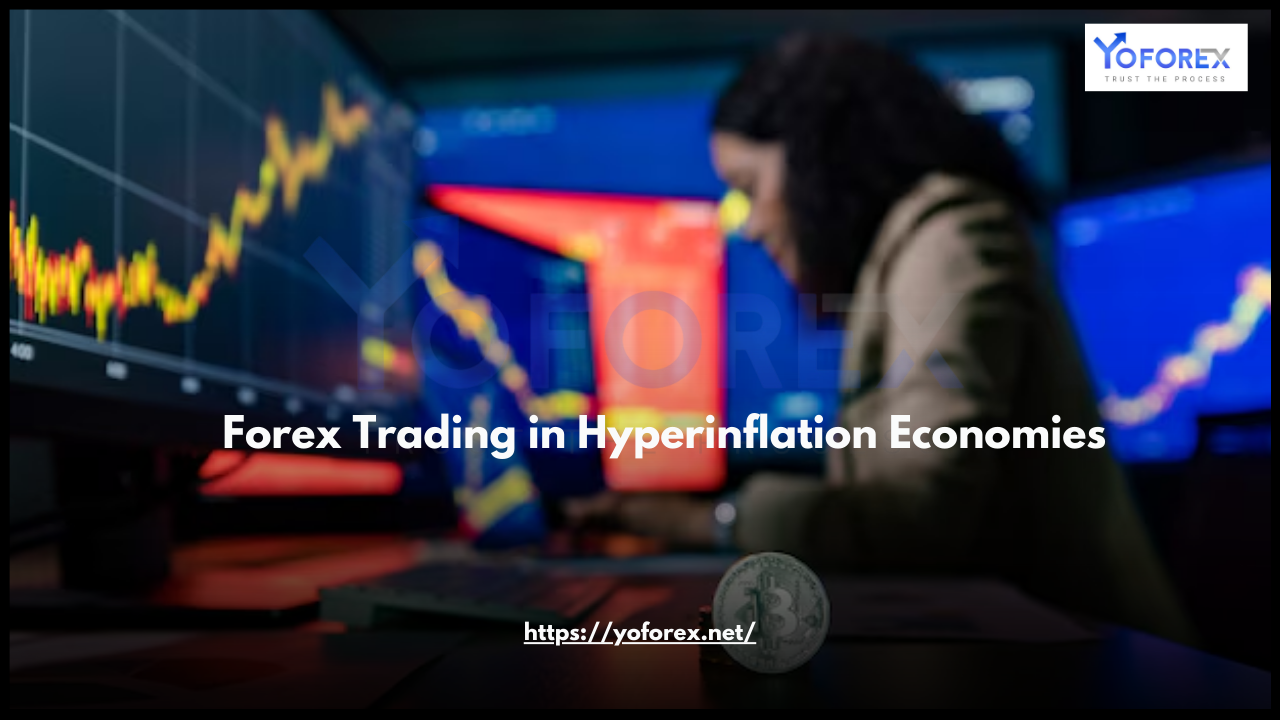Hyperinflation is an economic phenomenon where the inflation rate accelerates uncontrollably, rendering a country’s currency practically worthless. This has been witnessed in countries like Zimbabwe, Venezuela, and Argentina, where national currencies have lost significant value in a short period. For forex traders, hyperinflation economies present both risks and opportunities. Understanding how to navigate this economic chaos can help traders mitigate risks and capitalize on trading opportunities.
Understanding Hyperinflation and Its Impact on Forex Trading
Hyperinflation occurs due to excessive money printing, government debt mismanagement, or loss of confidence in the currency. The immediate effects include:
- Currency Depreciation: The local currency loses value rapidly against stronger currencies like the USD, EUR, or GBP.
- Loss of Purchasing Power: Prices of goods and services skyrocket, making basic necessities unaffordable.
- Capital Flight: Investors move their money to stable foreign assets to preserve wealth.
- Government Intervention: Authorities impose capital controls, pegging the currency or restricting forex access.
For forex traders, these conditions create an environment of extreme volatility. While high volatility can lead to profit opportunities, it also increases the risk of rapid market swings.

Survival Strategies for Forex Traders in Hyperinflation Economies
To thrive in forex trading amid hyperinflation, traders need to adopt strategic measures to protect their investments and leverage market movements.
1. Trade Stronger Currencies
Hyperinflation weakens the local currency, making forex trading pairs involving stable currencies more attractive. Traders should focus on major currency pairs like:
- USD/ZAR (South African Rand)
- USD/ARS (Argentine Peso)
- USD/VES (Venezuelan Bolívar)
- EUR/TRY (Turkish Lira)
These pairs tend to exhibit high volatility, allowing traders to benefit from significant price movements.
2. Use Safe-Haven Assets
During economic turmoil, traders should diversify into safe-haven assets, such as:
- Gold (XAU/USD): Often considered a hedge against inflation.
- Swiss Franc (CHF): A historically stable currency.
- Japanese Yen (JPY): Known for its resilience in financial crises.
3. Adopt Hedging Strategies
Hedging protects traders from excessive losses. Some effective hedging strategies include:
- Using Forward Contracts: Lock in exchange rates to counteract local currency depreciation.
- Trading Options: Buying put or call options on forex pairs provides insurance against drastic currency moves.
- Investing in Commodities: Inflation often drives up the prices of commodities like oil, gold, and silver, offering alternative trading opportunities.
4. Utilize Stablecoins and Cryptocurrencies
In hyperinflation economies, accessing USD or other stable foreign currencies may be restricted. Many traders turn to:
- Stablecoins like USDT, and USDC: These are pegged to the US dollar and provide a store of value.
- Bitcoin and Ethereum: While volatile, these assets often serve as alternative hedging tools against currency collapse.
5. Monitor Government Regulations
Governments in hyperinflation economies often introduce forex restrictions, including:
- Capital Controls: Limiting how much foreign currency individuals and businesses can access.
- Fixed Exchange Rates: Artificially setting currency value, leading to black-market rates.
- Forex Trading Bans: Some nations prohibit speculative forex trading to curb capital flight.
Staying updated with regulatory changes ensures compliance and helps traders adjust their strategies accordingly.
6. Leverage Interest Rate Differentials
Central banks in hyperinflation economies often impose drastic interest rate hikes to curb inflation. Traders can benefit from this by:
- Engaging in Carry Trades: Borrowing in low-interest-rate currencies (e.g., JPY, CHF) and investing in high-interest-rate currencies.
- Monitoring Central Bank Decisions: Predicting rate hikes or cuts can provide valuable trade signals.
7. Use Technical and Fundamental Analysis
Given the extreme volatility in hyperinflation economies, relying on both technical and fundamental analysis is crucial.
- Technical Analysis:
- Use moving averages to identify trends.
- RSI and MACD indicators to detect overbought/oversold conditions.
- Fibonacci retracement levels to determine support and resistance zones.
- Fundamental Analysis:
- Track inflation reports and central bank policies.
- Monitor geopolitical events and economic indicators.
- Pay attention to black-market exchange rates for more accurate pricing.
8. Diversify Trading Portfolio
Relying solely on forex trading in a hyperinflation economy is risky. Diversification strategies include:
- Investing in Foreign Stocks and ETFs: Exposure to global markets reduces dependency on the domestic economy.
- Trading Commodities and Indices: Consider trading oil, metals, and stock indices like the S&P 500.
- Engaging in Peer-to-Peer (P2P) Forex Trading: Bypassing government restrictions through P2P forex exchanges can help secure foreign currencies.
9. Consider Offshore Banking and Brokerage Accounts
Maintaining offshore accounts in countries with stable financial systems protects capital controls. Consider:
- Opening USD or EUR Accounts: Protects assets from local currency depreciation.
- Using International Forex Brokers: Ensures access to global forex markets without restrictions.
Conclusion
Forex trading in hyperinflation economies presents significant challenges, but with the right strategies, traders can survive and even thrive. By focusing on stronger currencies, utilizing hedging techniques, monitoring government policies, and diversifying portfolios, traders can protect their investments and capitalize on market volatility. Success in these conditions requires a well-informed approach, disciplined risk management, and adaptability to rapidly changing economic environments.

